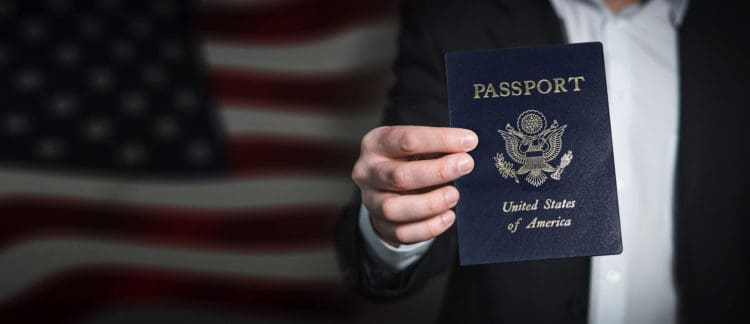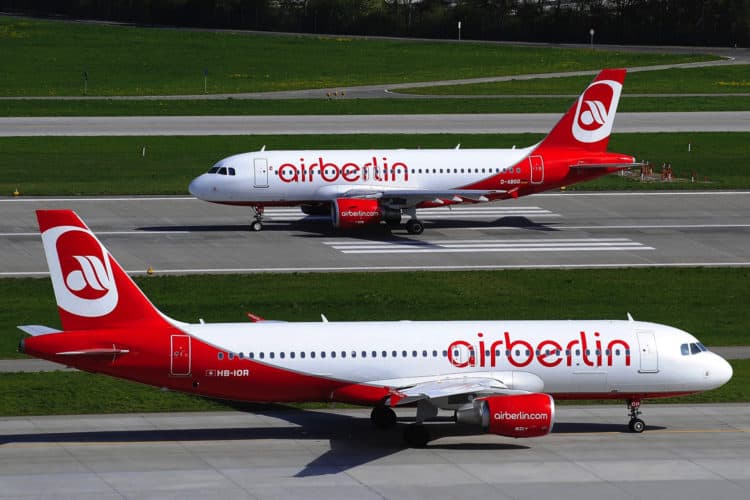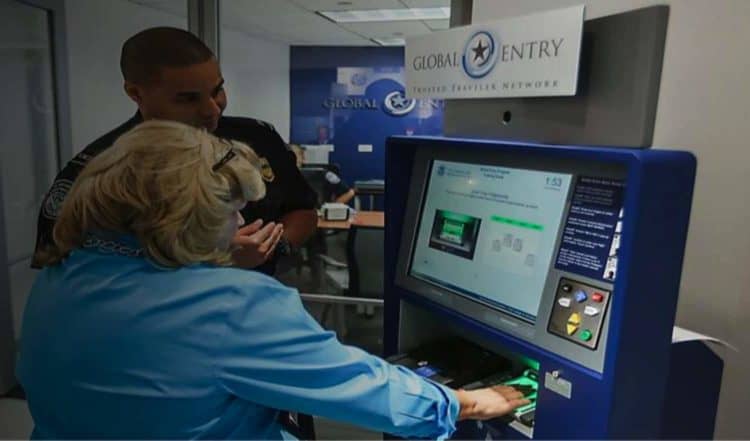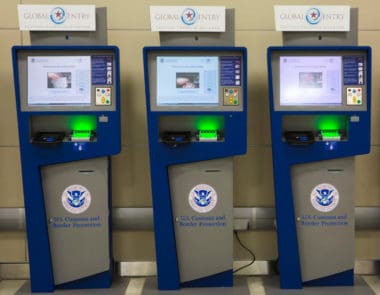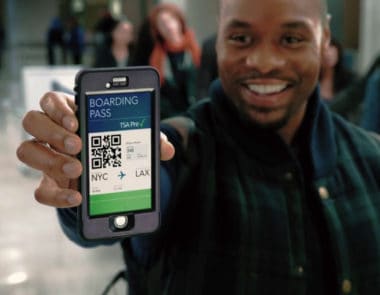What ID and Documents Does My Child Need To Fly in 2025?
You’re getting the family ready to go on your next big vacation. You have taken advantage of our How to Find Cheap Flights guide. You’ve been dreaming of this trip for months — maybe even years. You’ve dotted all your i’s and crossed all your t’s. You have your packing list ready to go…
And then, as you gather your and your partner’s passports, you wonder. Does my child need a passport? Do they need any sort of ID or documentation to fly? What am I missing and will not having an ID for my child ruin our big trip?
But don’t worry. In many instances, you don’t need anything at all to fly with your child. However, on the flip side, yes, in some cases, if you don’t have the proper identification or documentation, your trip could very well be ruined, leaving you and your family headed back home from the airport in disappointment.
To better help you avoid this, we’ve compiled everything you need to know about the ID and documents your child needs to fly.
Table of Contents
Domestic Flights
In most cases, your child won’t need any extra (or any, for that matter) identification when flying domestically. There are only a few special instances where you might need to bring some sort of documentation along with you. These special instances are usually dictated by age.
Babies (Newborn – 2 Years Old)
If you have a newborn, you’ll need to talk to your airline to determine their policies. Most require some sort of documentation from your newborn’s pediatrician, confirming that it’s safe for your baby to fly. Since this documentation can differ by airline, check with them first.
If you have a baby that’s not quite a newborn but under 2 (you can consider yourself safe if your child is around a month old), then you’ll want to bring along a copy of your child’s birth certificate (or a passport, if you have one) if you plan on flying with your child on your lap. This is just in case the airline tries to question your child’s age. And you don’t want them to force you to pay for an extra seat, just because you can’t prove that your child is actually under 2.
Children 2–18 Years Old
Once your child is 2 or older, they’re no longer eligible to fly in your lap. However, that doesn’t mean that you’ll need to provide them with any extra documentation to fly domestically. The only time that children under the age of 18 (but older than 2) will need some sort of ID or documentation is when they’ll be flying without a parent.
In those instances, your child will need a signed consent form (which you’ll usually get from your airline) and sometimes a consent letter. You’ll want to check with your specific airline to verify exactly what’s required.
As for ID, if your child is ages 5 to 14 and flying alone, they won’t need any form of ID, but it is handy to have, just in case. Send along a copy of some sort of identification. If your child is age 15 to 17 and traveling alone, they will need a form of identification. This can be one of a variety of things, from a school ID to a learner’s permit, a passport to a library card. The requirements for an ID at this age are relatively lax.
Once your child is 18, they’ll need all of the normal identification required for an adult to fly domestically, including a valid photo ID. Make sure that you stay up to date on the ever-evolving REAL ID requirements, for both your older child’s and your own upcoming flights. Currently, it’s expected that all domestic flights will require a REAL ID to fly, as of May 3, 2023.
International Flights
Things are easier when you start flying internationally. Every person in your group will need a passport to fly to a different country. Every person in your group will need to present this passport upon checking into your flight, going through airport security, and then upon arriving at your destination. You’ll also need to present this passport for every person in your group when returning to the country. This rule even applies to babies. Yes, even if your child is just a few months old. Yes, even if they’re not flying in their own seat on the plane. Again — everyone needs a passport. You’re getting nowhere without one.
Special Passport Rules for Infants
Unfortunately, getting a passport for an infant is easier said than done. You can’t just tell the baby to drop by the drugstore after work to get a passport photo and then mail it off. There are a lot of rules. For example, the passport application has to be completed in person, with both parents present. You’ll also need to show that you are the parents of the child, via a birth certificate or adoption or custody decree, as well as your IDs. You’ll need both original IDs and photocopies. Additionally, passports for anyone under the age of 16 expire after five years, rather than the normal 10.
The overall process, however, is very similar to what you went through when applying for your very own first passport. It includes filling out the DS-11 form for first-time passport applicants. Then, you have to prove your child’s citizenship via an expired passport, birth certificate, or certificate of citizenship. You’ll need both the original document and a photocopy. Lastly, you’ll need that requisite passport photo.
You can find all the information you need for passport applications for children under 16 on the U.S. Department of State website.
Special Rules for Flying Internationally with Only One Parent
There are some additional rules for flying internationally if your child will be flying with only one parent. These rules change according to your destination country, as well as your airline. However, in general, you want to have a notarized consent form with both parents’ signatures. You also want a copy of the non-traveling parent’s ID. In the case that a parent has sole custody or the non-traveling parent is deceased, you’ll need to show either a copy of your custody agreement (signed) or a copy of the death certificate (along with the consent form).
But what if your child is flying internationally with no parent? In those cases, your child will still need the passport, but also the notarized consent letter and their birth certificate.
Global Entry and TSA PreCheck
If you’re a frequent traveler, either business or leisure, chances are good that you use Global Entry or TSA PreCheck. These programs allow you to quickly make your way through security checkpoints as you travel.
Global Entry, for example, allows you to quickly make your way into the United States upon arrival on an international flight, via a kiosk and automated process. Applying for Global Entry includes an application process and in-person interview. Read our full Global Entry Program guide if you are not familiar.
TSA PreCheck, on the other hand, allows you to fast-track your way through TSA checkpoints. There’s no need to remove your shoes, coats, laptops, etcetera. The whole flying process becomes a whole lot easier, especially for families. Have you ever tried to get a toddler through a security checkpoint? It’s not easy. Like Global Entry, applying for TSA PreCheck does require you to submit an online application. You also do have to schedule an in-person interview. Read our full TSA PreCheck guide if you are not familiar.
If you have been enrolled in either one of these programs, you may assume that your status — especially if both parents in your party have status — automatically applies to your children. However, that’s not always the case. See when your status does roll over to your kids.
When Does Status Roll Over?
Global Entry status does not roll over to your children. However, your child can apply for Global Entry membership, as there’s no minimum age requirement. Children are required to go through the same process as their parents, including the application, fee, and in-person interview. The only special requirement is that, if your child is under the age of 18, you do have to be present for their in-person interview. You also do have to give your parental consent before they join the program.
For TSA PreCheck, however, children 12 and under receive the same benefits as their parent(s). It is automatic as long as they’re traveling with that parent. Children 13 to 17 can take advantage of their parents’ TSA PreCheck status only if they’re traveling on the same reservation as their eligible parent and only if the child has the TSA PreCheck indicator on their boarding pass. In all instances, for your status to apply to your child, regardless of age, you must be traveling with them. Children flying alone or children over 17 must apply for their own TSA PreCheck status to be eligible.
Flying With Your Child Likely Isn’t as Difficult as You Think
Flying with your child isn’t always a walk in the park. Having the right documentation and identification on hand will give you one less thing to worry about. The good news is, gathering all that documentation and identification is likely a lot easier than you first assumed, especially if you’re flying domestically. And, if you’re flying internationally, once you have that first passport obtained, you’re mostly finished.
So, go ahead and plan that big family trip and start planning to have your child’s required ID and documentation ready. With the info above, you’re well-equipped to make sure they have everything they need.
FAQ
Newborns need a special letter from their doctor; check with your airline to get the specifics. Children under 2 will need a copy of their birth certificate if you plan to fly with them on your lap.
If you are flying with your child, no extra documentation or ID is required. If you are not flying with your child, they will need a form of ID only if they’re between the ages of 15 and 17.
Yes, all passengers, regardless of age, are required to have a passport to fly internationally.
Yes, flying solo with your child (internationally) requires extra documentation. This includes a notarized consent form with both parents’ signatures, as well as a copy of the non-traveling parent’s ID. A custody agreement or death certificate is also required if the other parent does not hold custody or is deceased.
No. Your child will need their own Global Entry membership.
Yes, if your child is under 12 and traveling with you. Children 13–17 must be traveling with you, on the same reservation, and have the TSA PreCheck indicator on their boarding pass for your status to apply.
You’ll need to fill out Form DS-11 on behalf of your child. Don’t sign it until you take it in to the acceptance agent. You also need to provide citizenship evidence (and a photocopy), parental relationship evidence, and a photo of your child. After acquiring all of the necessary materials, you can take them to the passport acceptance facility nearest you. Typically this will be a post office, county clerk’s office, etcetera. Both parents should appear in person to apply for the passport. Both should bring IDs and photocopies of their IDs.
Further Reading: How to Check Your Passport Application Status & Renewal Status Online
Get The Vacationer Newsletter
Get highlights of the most important news delivered to your email inbox



